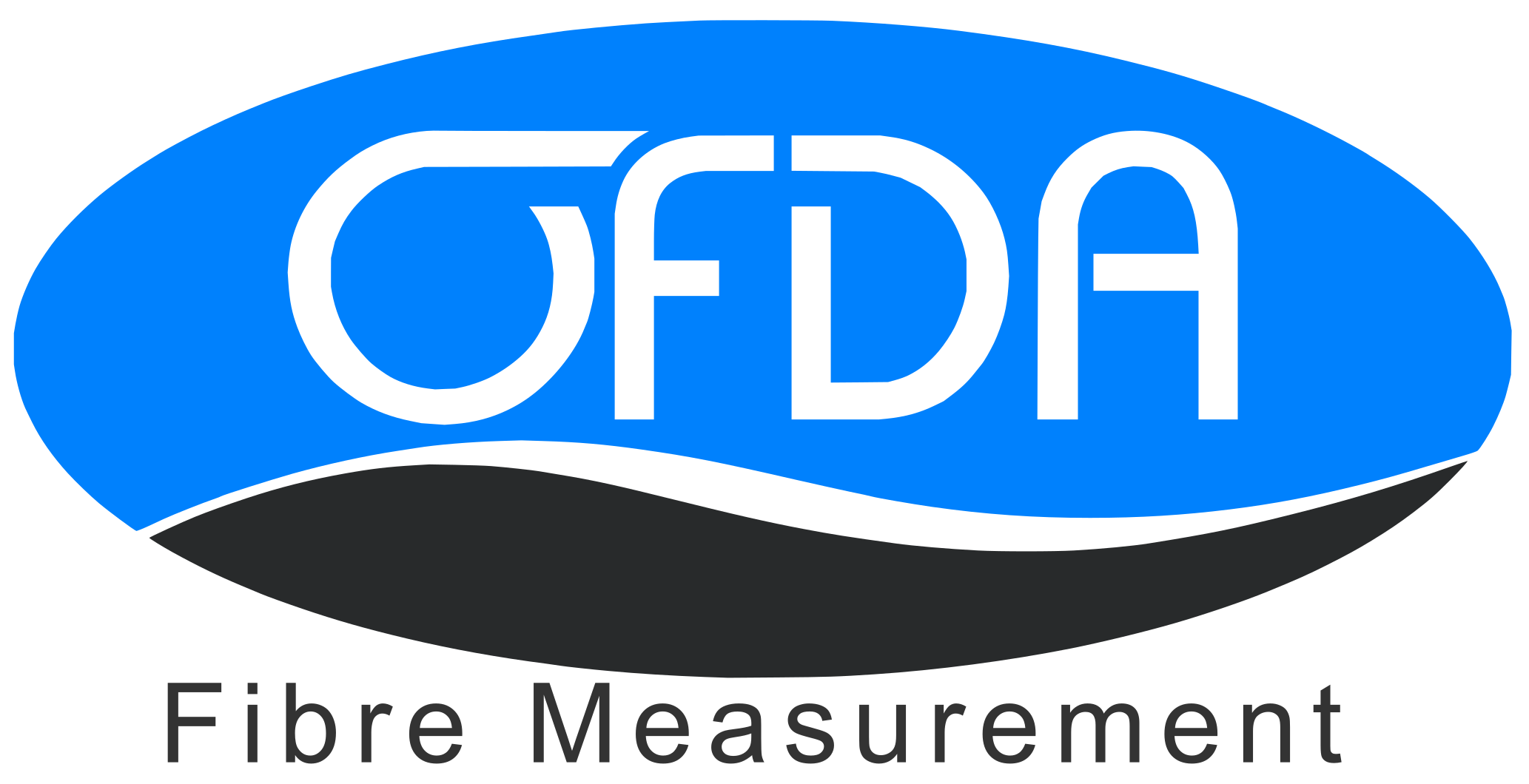Textile Fibres: Types, Properties & Measurement Tech
- Thomas Hegerty
- Jun 30
- 4 min read
Updated: Sep 24
Textile fibre is the fundamental component of all fabrics and garments we use every day. Whether it’s the cotton shirt you’re wearing, the wool blanket on your bed, or the synthetic blend in your sportswear, each starts with tiny strands known as textile fibres. But beyond fashion and comfort, fibre properties influence quality, durability, sustainability, and performance.
This guide will walk you through the world of textile fibre, from its basic classification to how fibre measurement tools like the Optical-based Fibre Diameter Analyser (OFDA) are revolutionising the textile industry.
What Is a Textile Fibre?
A textile fibre is a thread-like unit of raw material with a high ratio of length to width. These fibres are spun into yarns and then woven or knitted into fabrics. The nature of the fibre determines how soft, strong, elastic, warm, or breathable the fabric will be.
For a material to be considered a textile fibre, it must:
Have sufficient length and flexibility
Be strong enough to withstand processing
Possess uniformity and cohesion
Be dyeable and resistant to degradation (depending on use)
Categories of Textile Fibres
Textile fibres fall into two broad categories:
Natural Fibres
These fibres are obtained from plants, animals, or minerals.
Natural fibres are biodegradable and renewable, making them a popular choice for sustainable textiles.
Man-Made Fibres
These fibres are chemically processed or entirely synthetic.
Regenerated Fibres: Viscose, rayon, lyocell (derived from cellulose)
Synthetic Fibres: Polyester, nylon, acrylic, elastane (produced from petrochemicals)
Man-made fibres offer strength, durability, and versatility, making them suitable for technical textiles, sportswear, and industrial use.
Key Properties of Textile Fibre
Understanding the properties of a textile fibre helps manufacturers determine its ideal application. Here are some vital characteristics:
● Fibre Diameter: Measured in microns, fibre diameter impacts softness, strength, and insulation. Finer fibres are softer, while thicker ones are more durable.
● Tensile Strength: This refers to how much pulling force a fibre can withstand before breaking. Stronger fibres mean longer-lasting products.
● Elasticity and Resilience: These determine a fibre’s ability to return to its original shape after stretching or compression—crucial for athletic wear and upholstery.
● Absorbency and Moisture Wicking: Natural fibres tend to be more absorbent, while many synthetic fibres are engineered to wick moisture away, keeping the skin dry.
● Thermal Properties: Fibre structure influences heat retention or dissipation. Wool, for instance, is an excellent insulator, while linen promotes cooling.
Why Accurate Textile Fibre Measurement Matters
Precision in measuring textile fibre characteristics is essential for:
Quality Control: Ensuring consistency in fabric production
Performance Evaluation: Matching fibre properties to end-use requirements
Sustainability: Reducing waste by refining fibre selection and blending
Research and Innovation: Developing new textile solutions
Traditionally, fibre measurement has involved manual or semi-automated processes that are time-consuming and prone to error. That’s where advanced fibre analysis comes in.
Robotic Vision and the OFDA Advantage
At Robotic Vision, we specialise in cutting-edge fibre measurement tools—most notably, the Optical-based Fibre Diameter Analyser (OFDA). Our technology supports accurate, efficient, and repeatable fibre testing for both natural and synthetic textile fibres.
How OFDA Works:
OFDA uses high-resolution optical imaging to analyse thousands of individual fibres in minutes. It provides detailed information about:
Fibre diameter distribution
Curvature and crimp
Medullation
Fibre alignment and length
Benefits of OFDA:
Speed and Accuracy: Analyse hundreds of fibres simultaneously
Non-Destructive Testing: Preserves the sample for further evaluation
Portable and Lab Versions: Suitable for field use or laboratory settings
Digital Reporting: Enables instant data sharing and remote quality assurance
From wool growers to textile scientists and garment manufacturers, OFDA is setting a new benchmark in textile fibre assessment.
The Role of Textile Fibre in Sustainable Manufacturing
As industries shift towards eco-friendly practices, textile fibre selection plays a crucial role. Here’s how:
● Reducing Environmental Footprint
Focusing on biodegradable natural fibres like hemp and organic cotton helps reduce textile waste and pollution.
● Blending for Better Performance
Combining fibres (e.g., cotton-polyester blends) can balance performance and sustainability when properly measured and managed.
● Recycling and Reuse
Understanding fibre content and quality makes it easier to recycle fabrics or repurpose them into new products.
Robotic Vision’s technology contributes to these efforts by delivering data that supports smart decision-making in fibre sourcing and production.
Innovations and Trends in Textile Fibre
The future of textile fibre is vibrant and dynamic. Key trends include:
◼ Bio-Based Fibres
New fibres from algae, banana leaves, and orange peels are emerging as sustainable alternatives.
◼ Smart Textiles
Fibre infused with sensors or conductive materials is enabling wearable tech and responsive clothing.
◼ Performance Fibres
Fibres engineered for antimicrobial properties, UV resistance, or enhanced stretch are redefining comfort and protection.
All of these innovations require precise fibre analysis to ensure they meet technical standards—again, where OFDA excels.
Choosing the Right Fibre, Backed by the Right Data
Textile fibre is much more than just the raw material of fabrics—it’s the foundation of product performance, consumer satisfaction, and sustainable innovation. By understanding fibre types and their properties, manufacturers can make informed decisions that improve product quality and environmental impact.
At Robotic Vision, we provide the tools to make that possible. With our OFDA fibre analysis technology, you gain unparalleled insight into your fibres—enabling precision, efficiency, and innovation across the textile lifecycle.
Ready to Improve Your Textile Fibre Analysis?
Take your fibre assessment to the next level with Robotic Vision’s OFDA technology. Whether you’re in agriculture, fashion, interior design, or industrial manufacturing, our fibre measurement solutions will help you create better products with confidence.
Contact Us Today to learn more about how OFDA can elevate your textile operations.





Comments